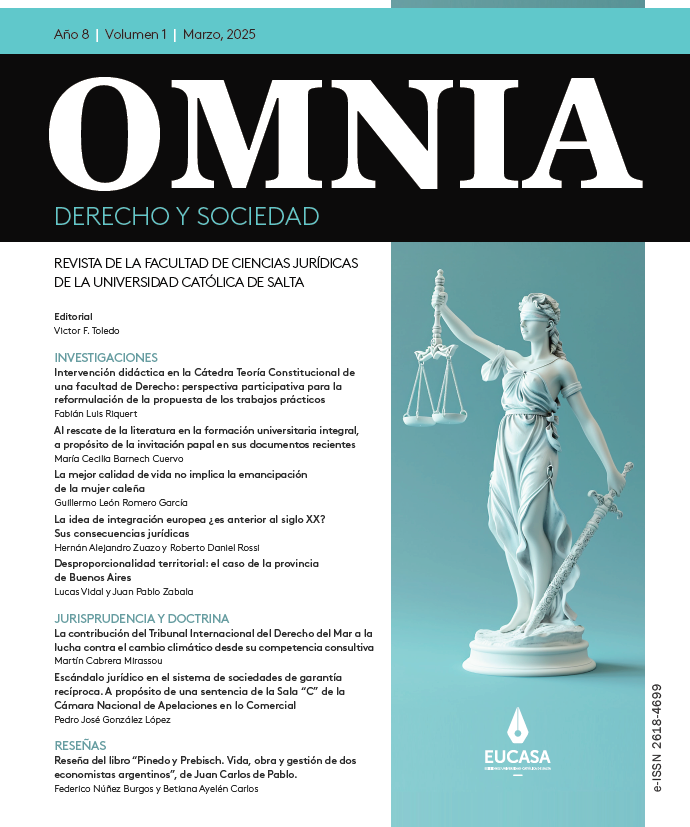Territorial disproportionality: the case of the province of Buenos Aires
Abstract
The province of Buenos Aires is one of the largest federal demographic centers in the world. At the national level, much has been written and analyzed on the subject, but within the province the situation is even more complex. Buenos Aires, for the election of provincial Deputies and Senators, is divided into eight electoral sections, which differ greatly demographically. This situation has worsened over time, to the point that today there are sections with three million voters and others with less than five hundred thousand. Political representation, in this case, when differences are so great, becomes crucial so that no voice is worth less than another and thus comply with the minimum requirement of democracy: “one person, one vote”. This article analyzes this whole situation in order to find out what were the causes and what are the consequences of this scenario.
Downloads
References
Constitución de la Provincia de Buenos Aires y sus reformas (2019). Di Lalla.
Dahl, R. (1971). La Poliarquía (1.a ed.). Tecnos.
Escolar, M., Minvielle, S., y Castro L. (2004). Sobrerrepresentación periférica y compresión partidaria. En M. I. Tula (Eds.). Aportes para la discusión de la reforma política bonaerense. Prometeo Libros
Malamud, A. (2004). Federalismo distorsionado y desequilibrios políticos: el caso de la provincia de Buenos Aires. En M. I. Tula (Eds.). Aportes para la discusión de la reforma política bonaerense. Prometeo Libros
Ollier, M. M. (2015). Maldita Buenos Aires. El resultado electoral 2015. Revista SAAP, 10(1), 1 9
——— (2010). Atrapada sin salida. Buenos Aires en la política nacional. Unsam Edita.
Samuels, D. y Snyder, R. (2007). El valor de un voto: una perspectiva comparada sobre la desproporcionalidad territorial. En E. Calvo y J. M. Abal Medina (h) (Eds.). El federalismo electoral argentino. Sobrerrepresentación, reforma política y gobierno dividido en la Argentina. EUDEBA
Copyright (c) 2025 Juan Pablo Zabala, Lucas Vidal

This work is licensed under a Creative Commons Attribution-NonCommercial-ShareAlike 4.0 International License.








